This series of articles derives much of its fact and inspiration from Hugh Murray’s book A Directory of York Pubs, 1455-2003. References to the book, as given below, have two numbers: the first indicates the text, and the second its accompanying historical photograph. The present article is illustrated by the author's own photogrpahs. You may reproduce these without prior permission for any scholarly or educational purpose as long as you (1) credit the photographer and (2) link your document to this URL in a web document or to the Victorian Web in a print document. [Click on the images to enlarge them.] — Rita Wood
Pubs at city gates
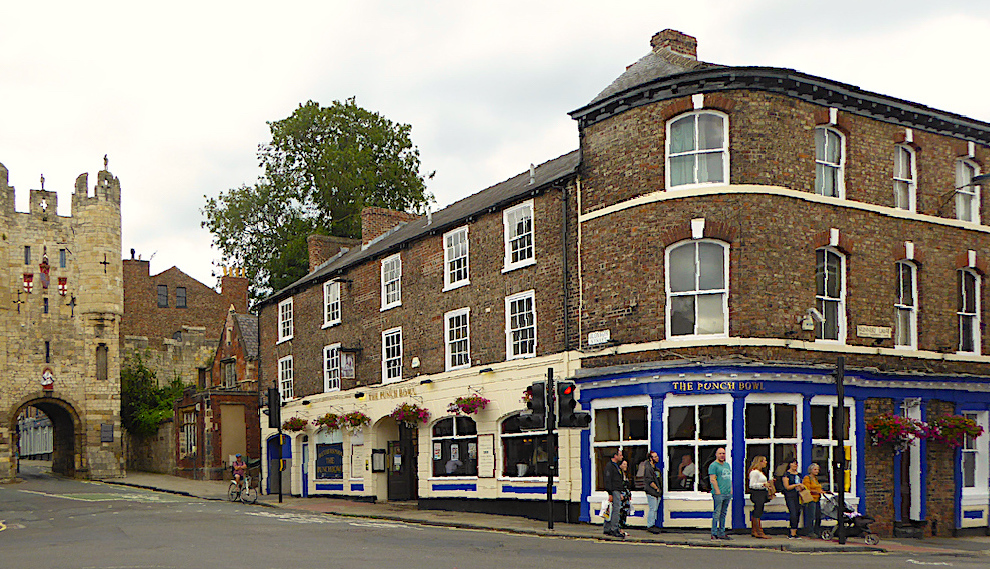
The Punch Bowl, Blossom Street.
York still has its medieval walls, and the gates are known as "bars." As might be expected, every bar has its inn or pub. A prominent one is the Punch Bowl, Blossom Street, close to the former Trinity National School for Girls in the same street (Murray 129, 198). This pub was mentioned in the late eighteenth century, but could be from much earlier, since it is outside the gate where the London Road entered the city. It has expanded into adjacent properties. In Murray’s 1906 photo, the pub occupied only three bays on Blossom Street. In the 1885 directory, from the gate and going towards the pub, there was the school, a haircutter and tobacconist, a draper and milliner, then the pub, and occupying the Nunnery Lane corner at its other side, a chemist. The Punch Bowl Inn itself had its own carriage-building works and shoeing forge – there was everything in the immediate area to supply a traveller's needs, including a barber for a haircut. Now the Punch Bowl Hotel occupies the whole corner site, from the former school and right round the corner into Nunnery Lane, with buildings dated to 1835 and 1863.
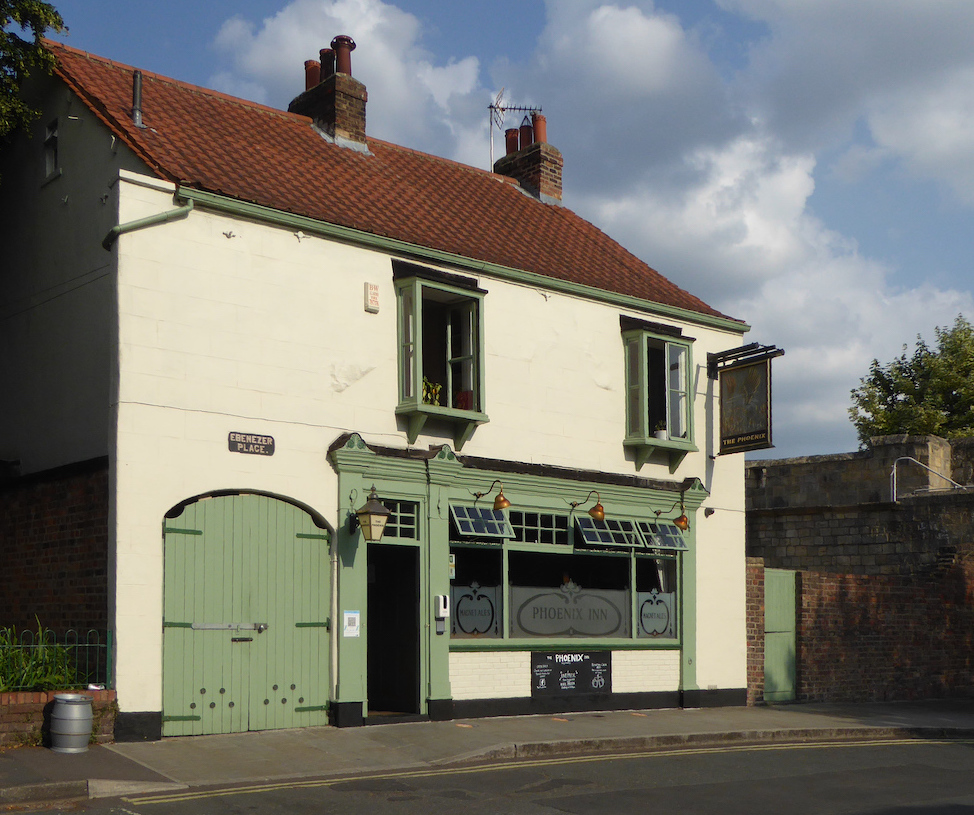
The Phoenix, Ebenezer Place,
George Street.
A pub at another city gate is The Phoenix, Ebenezer Place, George Street. This is ready for those walkers or cyclists who have entered the city at the quiet Fishergate Bar. It is illustrated by Murray with a photo of 1935, but had been in existence as the Labour in Vain since at least 1867, though it was improved or perhaps rebuilt around 1902 (Murray 128, 196). The Listing text says that the Phoenix is the last surviving pub inside the walls to have served the cattle market, which until 1827 was held within Fishergate Bar. At that date, the cattle market was moved to a larger area just outside of the bar, and the City Arms was built by the Corporation to serve it (see Nineteenth-Century Coaching Houses and Inns).
Other pre-Victorian historic pubs
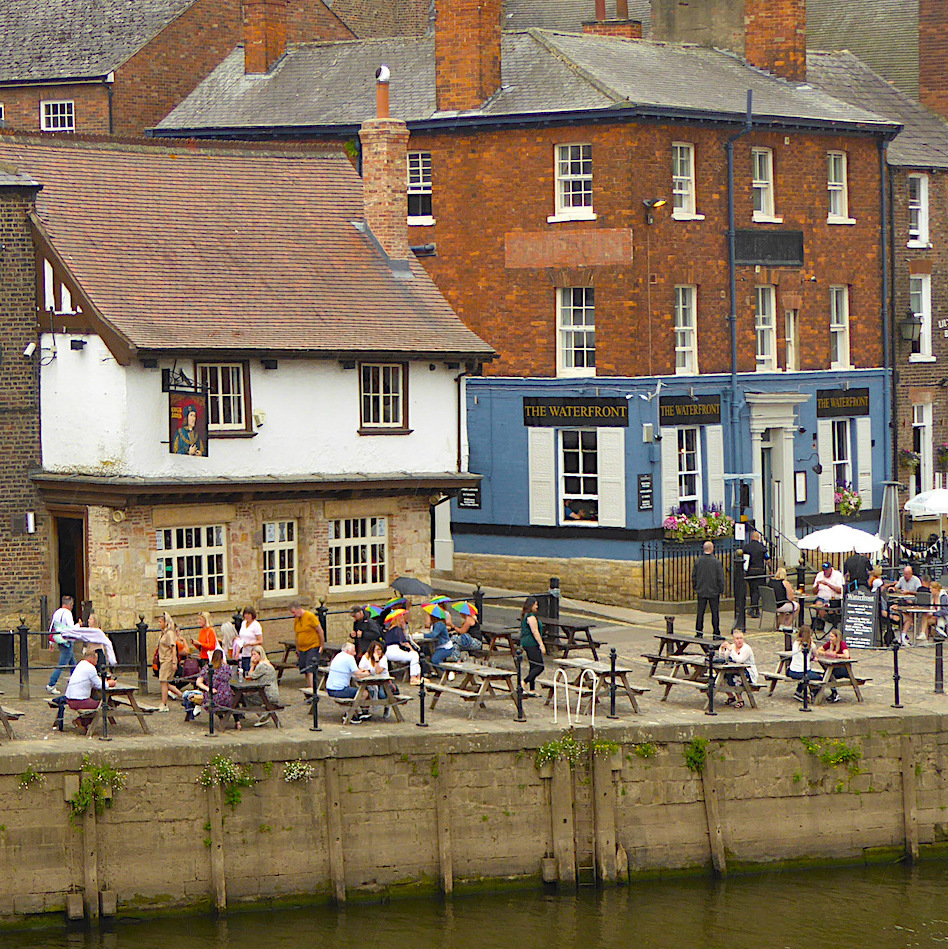
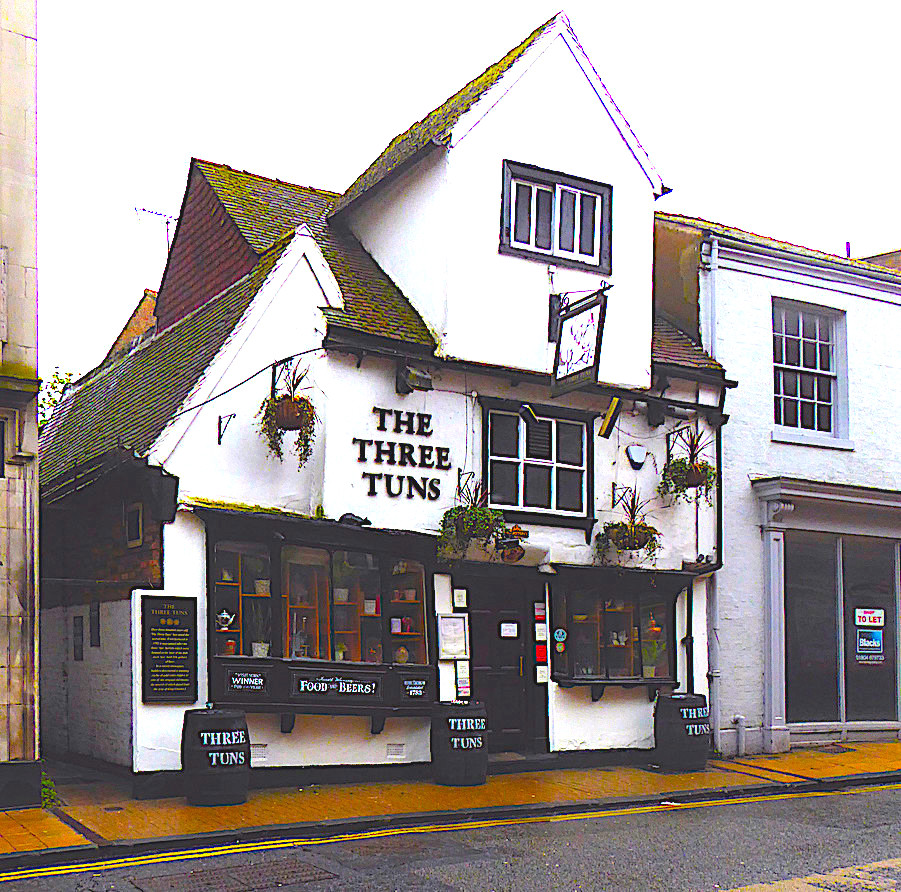
Left: The King’s Arms, King’s Staith. Right: The Three Tuns, Coppergate.
These are wooden-framed and jettied buildings - "Dickensian" buildings – and make their antiquity a selling point. Of these, the most-publicised example must be the King’s Arms by York’s medieval bridging point. It was renamed the Ouse Bridge Tavern in 1867, and stayed with that name until 1974. But before that, and now, it is the Kings’s Arms (Murray 127, 178). The King’s Arms looks "typically medieval," not just "Dickensian," but the cellars and ground floor are waterproofed against the next time the Ouse floods. Compare the Three Tuns in Coppergate for scenic composition (Murray, 162, 224); and imagine the dark alley where rose the demolished Black Bull, Finkle Street, off St Sampson’s Square, with two upper floors jettied out over the narrow winding lane (Murray 12, 26).
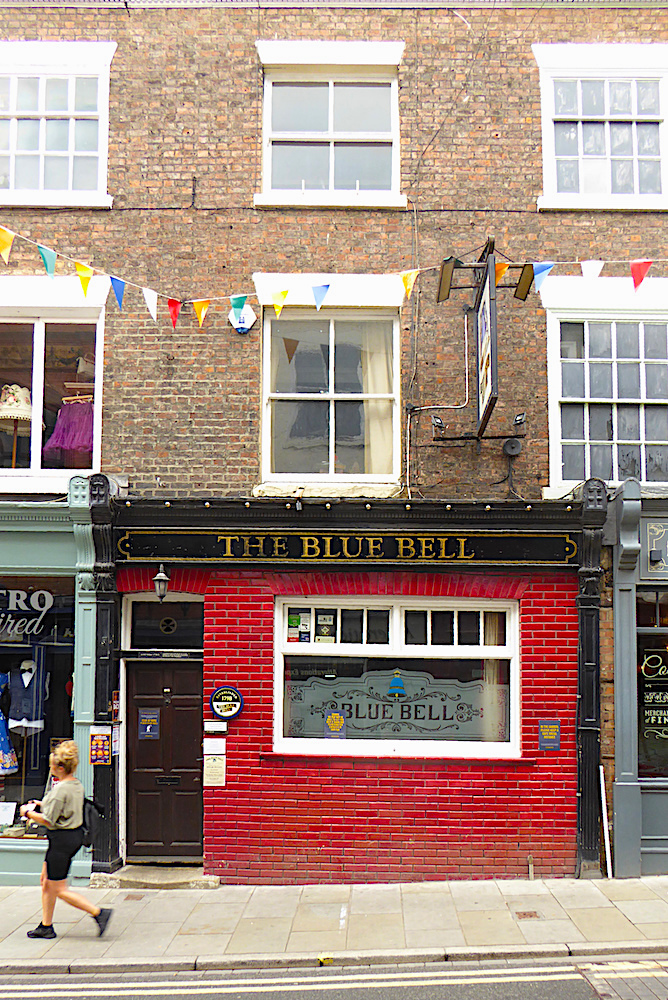
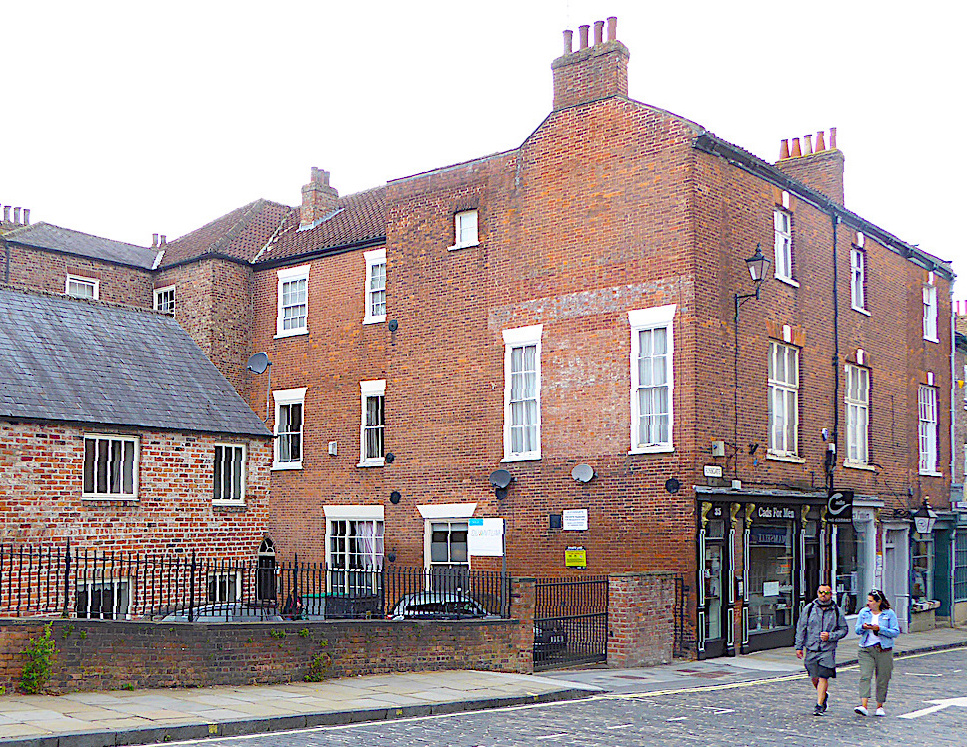
Left to right: (a) The Blue Bell, Fossgate. (b) The King’s Arms Hotel, Fossgate with adjacent buildings.
Many other York pubs have been in the business for numberless years: they all have been altered, either piecemeal or more severely. For example, the Blue Bell, Fossgate (Murray, 17, 30) had a glazed brick frontage on the ground floor by 1935, an addition which is likely to be early nineteenthth-century, but there has been a pub here since at least 1798. In 1903 at the Brewster Sessions, its licence was opposed as it was "neither suitable or necessary" as there were 34 licensed premises between Pavement and Walmgate Bar - but somehow it survived. Another pub or hotel from at least the eighteenth century operated beside Foss Bridge: the obviously historic King’s Arms Hotel, Fossgate (Murray 141, 194). When for sale in 1876, the premises included four cottages and a brewhouse - might that perhaps explain the low buildings and the paved yard towards the river Foss? The hotel closed in 1958, but the blank gable wall still shows the remnants of bold painted advertisements.
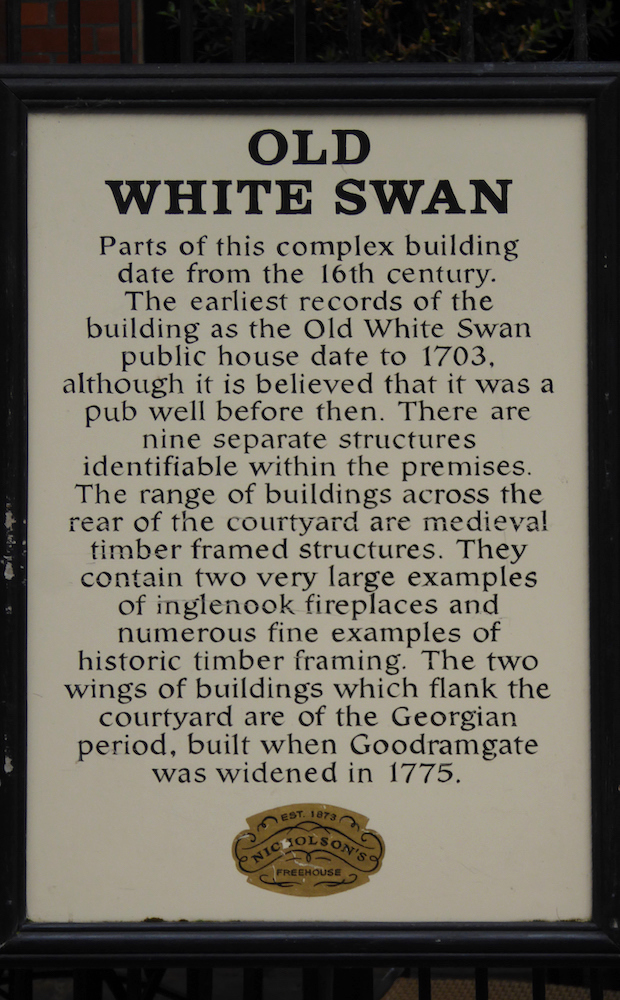
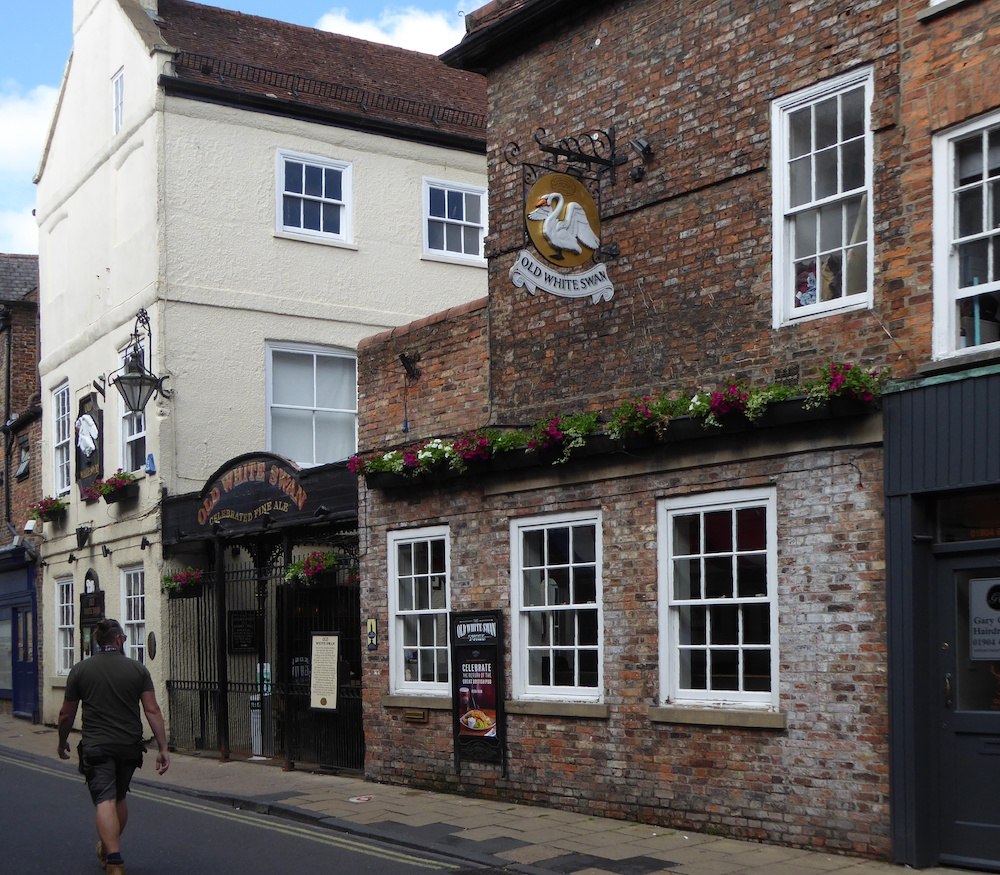
Left: Information board. Right: The Old White Swan, Goodramgate.
At the site of the Old White Swan, Goodramgate there has been an inn for centuries, but even since 1906 there have been changes in appearance, and in the extension of the premises into surrounding properties – all is vaguely the same at first glance, but every detail has changed - railings, the shop frontage on the right, the brewers… (Murray 126, 177).
All these establishments would have been there when the Victorian traveller entered the city, and still contribute to the old-world atmosphere of York today.
Links to related material
- Public Houses in Walmgate, York
- Nineteenth-Century Coaching Houses, Inns and Pubs in York
- Pubs converted to other uses in York
- Victorian and Edwardian pubs in Britain
- Instead of the Pub: Temperance Billiard Halls
1885 Directory, Leicester University archive.
Chief Constable’s report, 1902, York City Archives 258. Details of accommodation are given in these reports and often quoted by Murray 1988.
An Inventory of the Historical Monuments in City of York, Volume 5, Central. HMSO, London, 1981.
Murray, Hugh. A Directory of York Pubs, 1455-2003.York: Voyager Publications, 2003.
Pevsner, Nikolaus, and David Neave. Yorkshire: York and the East Riding. New Haven and London: Yale University Press, 2002.
Created 10 May 2022